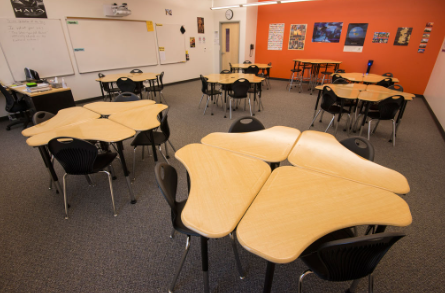Why Every Classroom Needs a Collaborative School Desk
Collaboration is essential to the learning process, and the right classroom environment can significantly enhance student interaction. One of the key elements in fostering cooperation is the use of collaborative desks. These desks encourage group work, improve communication, and create a dynamic learning environment. Here’s why every classroom should consider incorporating collaborative desks.
Enhancing Student Interaction
The collaborative school desk is designed to facilitate interaction among students. Traditional rows of desks often hinder communication, creating a barrier to effective collaboration. In contrast, these fixtures are arranged in clusters or pods, making it easier for pupils to discuss, share ideas, and work together on projects. This setup helps break down barriers and fosters community within the classroom. Pupils are more likely to engage with one another, which can lead to deeper understanding and retention of the material. Moreover, this interaction encourages students to develop social skills, such as empathy and teamwork, which are invaluable inside and outside the classroom.
Promoting Active Learning
Active learning is a teaching approach that actively involves pupils in the learning process instead of passively receiving information. Collaborative desks support this by providing a flexible and adaptable space for various activities. Whether it’s group discussions, peer reviews, or hands-on projects, these desks make it easier for students to participate actively. This shift from passive to active learning helps pupil develop critical thinking and problem-solving skills essential for their academic and personal growth. In addition, active learning environments can increase motivation and engagement, making the learning experience more enjoyable and effective. When actively involved, pupils are more likely to remember and apply what they have learned.
Improving Communication Skills
Effective communication is a vital skill for success in both academic and professional settings. Collaborative desks create opportunities for pupils to practice and refine their communication skills. By working closely with their peers, pupils learn to articulate their thoughts clearly, listen to different perspectives, and provide constructive feedback. These experiences can help build confidence and prepare learners for real-world scenarios where teamwork and communication are crucial. Furthermore, frequent communication in a supportive environment helps students overcome fear or reluctance to speak up, improving self-expression and interpersonal relationships. This skill set is beneficial in school, everyday life, and future careers.
Facilitating Teacher-Student Interaction
While collaborative desks are great for student interaction, they also enhance the relationship between teachers and pupils. Teachers can easily move around the room, observe group dynamics, and provide personalised assistance. This increased mobility allows teachers to identify pupils needing extra help and offer timely support. Additionally, the collaborative setup encourages a more interactive teaching style, where teachers can engage with students more directly and create a more inclusive learning environment. This setup also allows teachers to employ diverse teaching strategies, such as group activities and interactive lessons, catering to different learning styles and needs. As a result, pupils receive a more holistic and engaging educational experience.
Creating a Dynamic Learning Environment
A dynamic learning environment is constantly evolving and adapting to the needs of students. Collaborative desks contribute to this by offering versatility and flexibility in classroom arrangements. Teachers can easily reconfigure the desks to accommodate different activities, from group work to individual assignments. This adaptability keeps the classroom environment fresh and engaging and allows for a more personalized learning experience. Pupils can work in groups or individually, ensuring that their unique learning styles are accommodated. Furthermore, a dynamic learning environment can foster creativity and innovation, as pupils are encouraged to explore different ways of learning and problem-solving.
A collaborative school desk plays a crucial role in modern education by enhancing student interaction, promoting active learning, improving communication skills, facilitating teacher-student interaction, and creating a dynamic learning environment. These desks are more than just furniture; they can transform the classroom experience and better prepare students for future challenges. By fostering a collaborative spirit, these desks help cultivate essential skills that will serve students well beyond their school years.







